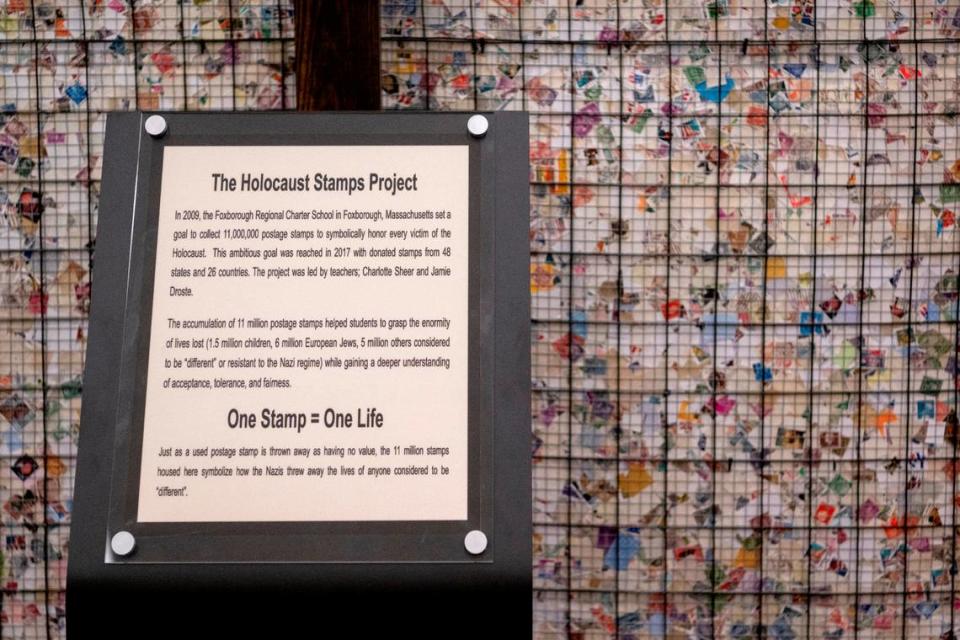Holocaust museum exhibit featuring 11 million stamps unveiled in Bellefonte. What to know
Somber faces and cloudy eyes on Wednesday filled the room that featured the centerpiece of a powerful new museum exhibit in Bellefonte, one that adds context to the horrors of the Holocaust.
The American Philatelic Center (100 Match Factory Place), which also serves as a stamp museum, unveiled a permanent exhibit, “A Philatelic Memorial of the Holocaust,” to an invitation-only crowd Wednesday evening. At the center of the exhibit lay a 12-foot wide fence — with barbed wire at the top, reminiscent of those from concentration camps — with some 11 million stamps, collected by schoolchildren, filling the display and towering over onlookers.
Each stamp represents the life and death of the Holocaust’s estimated 11 million victims, 6 million Jews and at least 5 million non-Jews (prisoners of war, Jehovah’s Witnesses, homosexuals, Romany, etc.).
“We want to be able to have something here that people can take away, not just go in and say, ‘What a nice building,’” said Scott English, the society’s executive director. “We want people to have an experience together.”
The exhibit — which also includes enlarged reproductions of mail sent from Holocaust-era ghettos and concentration camps, along with stamps around the world symbolizing remembrance — is now open to the public.
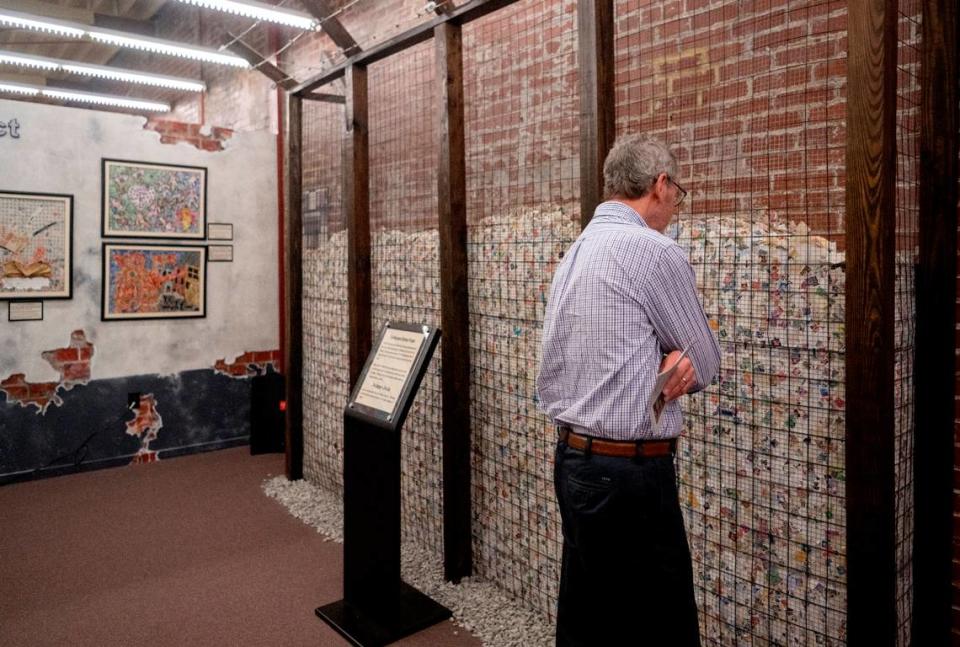
Story behind the exhibit
When since-retired teacher Charlotte Sheer first broached the topic of the Holocaust with her fifth-graders at Massachusetts’ Foxborough Regional Charter School in 2009, she was struck by their empathy and understanding.
They read the book “Number the Stars,” a work of historical fiction by Lois Lowry that won a Newberry Award. They understood Adolf Hitler was a bully of sorts, condemning those who looked or acted different. They realized their Jewish teacher would’ve likely been killed if she had lived around Germany between the 1930s and mid-1940s. They innately knew antisemitism was wrong.
But they just couldn’t wrap their 10- and 11-year-old minds around the number of victims. Eleven million. Could they collect something, they asked their teacher, so they could see just how much 11 million was? Pennies were too heavy. Paper clips had been done years before by another class in another state.
But what about stamps?
“We came around to the fact that once you use it once, it’s thrown away as having no value — which is exactly what Hitler was doing with human beings, throwing them away as having no value,” Sheer recalled Wednesday to the CDT, after a 10-hour drive from New England. “So then I took it a step further and I took out a whole bunch of postage stamps for them to look at, and I said, ‘ What do you notice about them?’
“They said they’re all different. They had different places, different people and different values, even. They represented the diversity of the world, which Hitler was trying to eliminate. So we had a lot of symbolism attached to the stamps.”
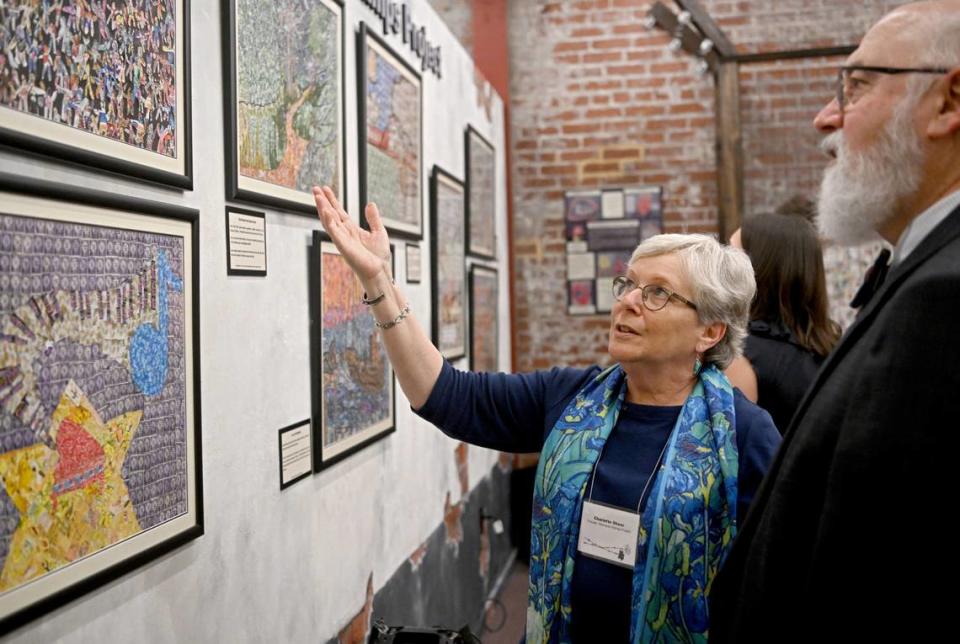
What started as a lofty undertaking by a fifth-grade class soon spread throughout the school. Volunteers throughout the community also approached the school. Their story spread. Soon enough, the entire K-12 school was contributing in some way, even kindergartners who weren’t told about the Holocaust but counted stamps by fives and 10s as part of math class.
Supporters from 48 states and more than two dozen countries sent the school stamps, with volunteers as old as 92 there to help count. It took three years to reach 1 million stamps and five more years to reach 11 million.
Sheer phoned Bellefonte’s American Philatelic Center around that time to ask if they knew anyone who might take the stamps and the stamp collages the school had created and collected. The project was dubbed “The Holocaust Stamps Project.”
“I was like, ‘We will,’” English remembered. “We’ll figure it out.”
After several years of planning, COVID setbacks and debating with vendors — as a nonprofit, the center admittedly “brow-beat” vendors into lowering prices due to the project’s importance — the Bellefonte building finally unveiled what might serve as the state’s most unique Holocaust memorial.
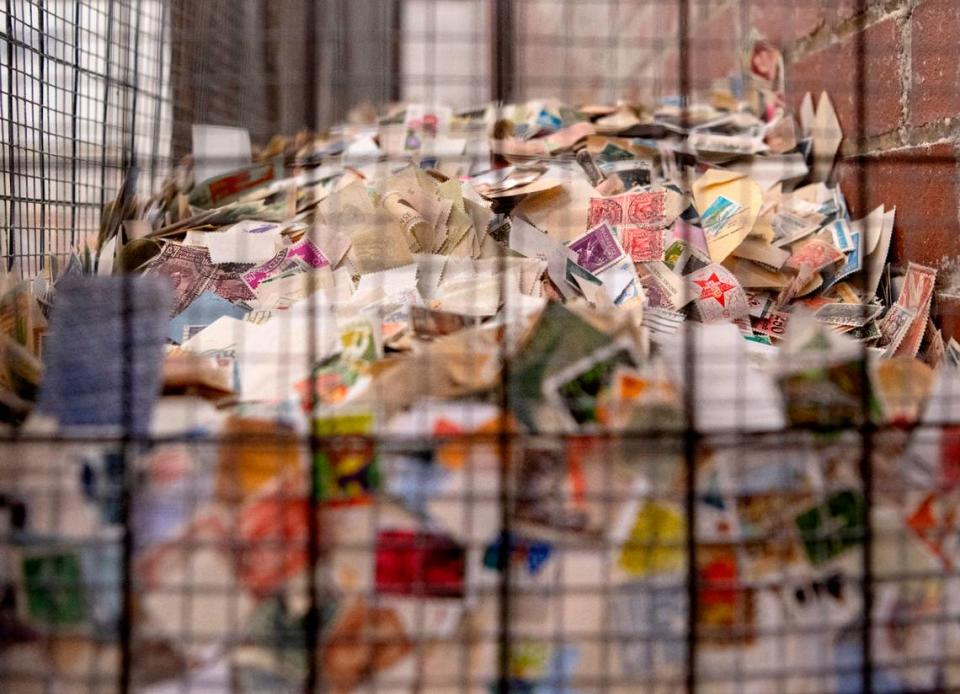
The exhibit & Wednesday’s dedication
The centerpiece, of course, is the display holding the 11 million stamps. It’s a somber sight — a display a foot-and-a-half deep and 12 feet wide, with a wave of stamps more than 5 feet tall. It’s almost as if an elephant made out of stamps laid down in the middle of the room.
Some of the 18 stamp collages, created by students at Foxborough, decorate the surrounding walls and depict different events from the Holocaust era. One collage was shown depicting Kristallnacht, or the Night of Broken Glass, after the Nazis and their sympathizers broke the windows of Jewish-owned stores, buildings and synagogues in 1938.
A timeline of the Holocaust fills another wall, while a large map with enlarged ghetto postcards surrounds another.
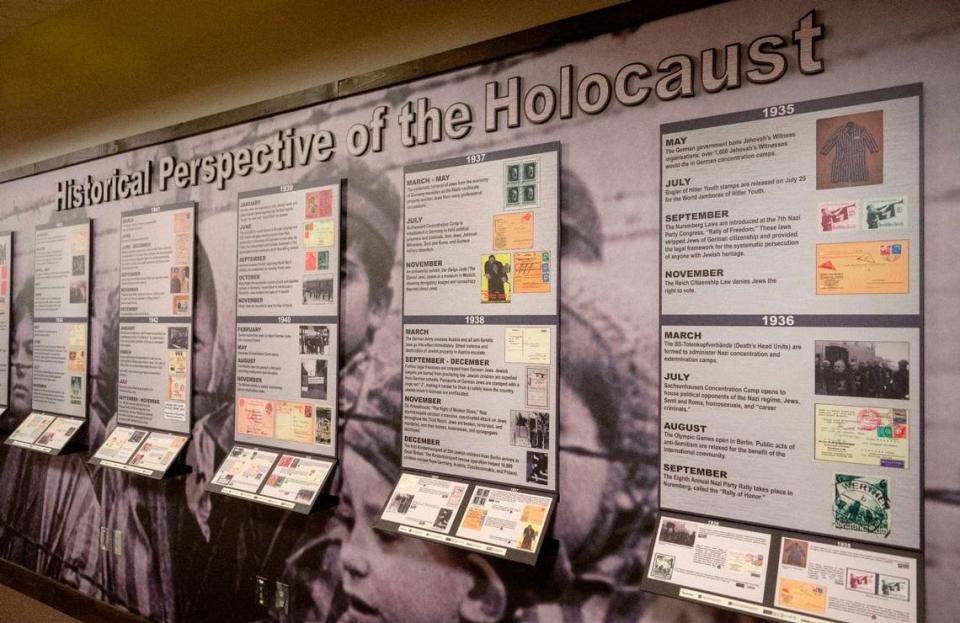
During a Wednesday dedication, which featured a blessing from State College Rabbi David Ostrich and speakers from Penn State, the overwhelming sentiment was that this community, this country and this world needed more exhibits like this — and more teachers like Sheer.
What does it matter if people are aware of the Holocaust if the hate still continues, asked Boaz Dvir, the director of the Holocaust, Genocide and Human Rights Education Initiative at Penn State. Students with a passive learning experience memorize something for a test and then simply forget. But, with hands-on learning like The Holocaust Stamps Project, Dvir said that’s not the case.
“This is the kind of project that can be lasting, that can make a difference, that can alter the perception of a child and provide that child with something they can carry on beyond just regurgitating knowledge of a test,” Dvir added.
Sheer felt similarly. She saw students connect and reject antisemitism by understanding what many schoolchildren learn about, but few fully appreciate. And she hopes the new exhibit impacts people as much as it did the students at Foxborough.
“What we’ve done means other kids are going to learn from it and, hopefully, adults too,” she said. “And in this age of rising antisemitism, it couldn’t happen at a more important time.”
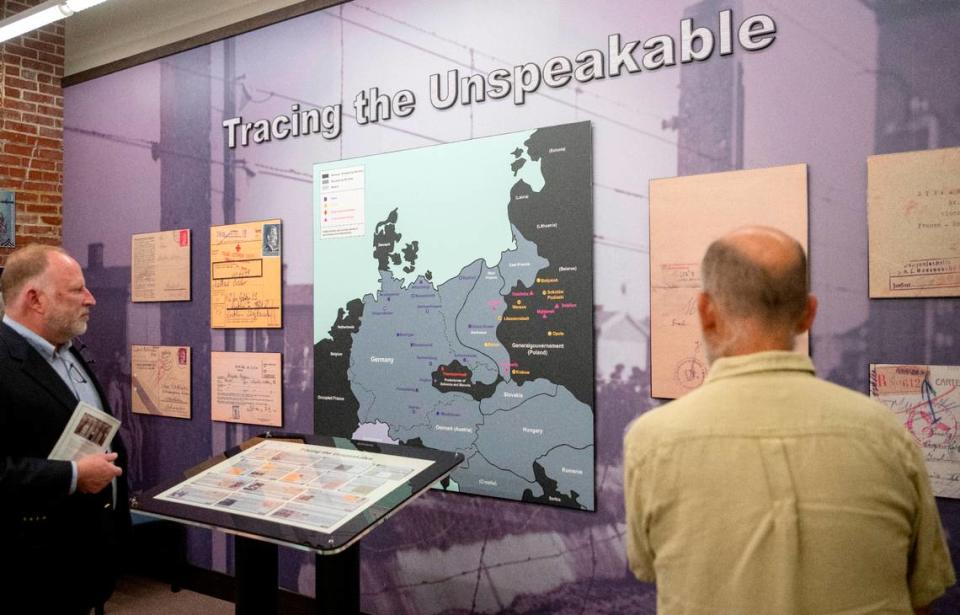
How, when to see the exhibit
The exhibit is now permanently housed inside Bellefonte’s American Philatelic Center at 100 Match Factory Place, with future plans to highlight some local history — such as Bellefonte’s role in the early days of transcontinental mail — in the same space.
Admission is free, and the public is encouraged to visit when the center is open, Monday through Friday, from 8:30 a.m. to 5 p.m. Groups of 15 or more are asked to contact the center ahead of time, and possibly connect with a tour guide, by calling 814-933-3803.
An open house will also be held from 11 a.m. to 3 p.m. Sunday, June 11, for those interested in tours focused on the exhibit titled, “A Philatelic Memorial of the Holocaust.” Presentations will be given about the exhibit and Holocaust-era postal relics by experts Ken Lawrence and Justin Gordon; exhibit coordinator Susanna Mills; and Jamie Droste, who completed the Holocaust Stamps Project with Foxborough students.
